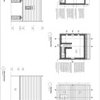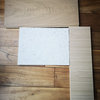The Facets of Fleecewear Embroidery instead of custom patches
Has athleisure taken over as the new fleecewear when it pertains to challenging embroidery? Utilizing custom patcheswill certainly repair the issue, however today we require to go over straight embroidery on fleece product. Probably so, considering that the majority of the inquiries we get from embroiderers revolve around the difficulties of managing the slinky, stretchy, unsafe things. Yet there was a time when fleecewear was the culprit. Just how do you keep the stitches from penetrating the pile? Just how do you achieve great detail with all that stack? Which stabilizers work best as well as what is this topping things, anyhow? With the growth of all kinds of activewear pressing fleecewear sales, in addition to its convenience variable, affordability and also lightweight heat, it's worth a testimonial of exactly how to obtain the most effective results when stitching on fleece.
First Fabric, Then Branding
Fleece first went into the marketplace with the residence decoration sector, as velour that was utilized for upholstering furnishings. It is a knitted fabric made from 2 types of yarn that is brushed on one side in order to produce snooze. Once the brushing generates a shaggy, irregular snooze, it is sheared to the wanted size. The napped surface area can appear outside, as in activewear jackets and also vests, or on the inside of sweat t shirts and also sweat pants.
It is the cleaning step that elongates the fibers, "filling out" the areas in the weave, which delivers a textile that is cozy, soft as well as long lasting. It is typically made from synthetic fibers, at which point it can be treated for wicking buildings, making it the suitable prospect for clothing made use of in sports, training as well as outdoor wear.
With the preponderance of fleecewear, sweat t-shirts and also trousers on the marketplace and on playing areas, they stand for a large and also prominent section of the embroidery market. Although fleece is a weaved, it is a sturdy knit, supplying a surface that, as soon as correctly supported, has the ability to hold designs with reasonably high stitch matters. Embroiderers need to understand a couple of standard factors to consider when embroidering on fleece in order to offer their clients with remarkable, come-back-for-more results that will have others asking, "Where did you get that done?"
Before you Begin
When given the job of stitching on fleecewear or sweat garments, backing, topping, hooping and also sort of style will certainly all affect your selections. The appropriate choices will result in outstanding embroidery, while the wrong ones will certainly leave your consumer let down. Right here are the aspects to bear in mind when confronted with fleece: this website
1. Layout
When implemented appropriately, you could be astonished at the elaborate styles that can be completed on fleece. Even specialty strings like 60 weight for very little letters and also detail, or metallic for an unique, elegant look, can be utilized on fleece. You merely need to assist those stitches stay visible as well as sit on top of the snooze, instead of letting them penetrate the soft, thick material as well as obtaining lost. Layouts with thin elements or logo designs with small text will need a solid base, and also you might need to stitch a typical area fill utilizing a zig-zag underlay stitch in the very same shade of the textile before embroidering for all or part of the layout. This will certainly provide a smooth, encouraging surface area-- above the nap of the fleece-- for the detail or lettering to "sit" on. One more option would certainly be to produce a light-density fill at opposing angles in order to produce a "internet" result that would certainly catch down the fibers of the fabric.
2. Maintaining Top & Bottom
A water soluble covering put on top of the garment before embroidering will aid to support the garment, lowering the nap to make sure that the stitches sit above them and also do not get shed. The topping can easily be gotten rid of with a light spray of water or steam. This essentially thaws the covering and also it will reduce right into detachable globs. To get rid of, take a wadded up scrap of covering, dampen it with water or heavy steam, and also bit on any kind of continuing to be littles topping. You'll find that those small holdouts will certainly comply with the topping wad you developed. Think about this as the "bubble gum method" of covering removal, since gum tissue, also, has a tendency to stay with itself.
While fleece is a rather sturdy textile, it likewise is a knit, and requires to be supported with a backing when it is hooped. Select a steady, moderate weight cut away if there is stretch to the fabric. If the material doesn't have any kind of stretch, you could escape a get rid of, which will certainly stabilize the garment during sewing, and then vanish after a couple of launderings. Constantly make certain that if you stitch a huge style, and also you are utilizing a remove, to cut the support away, rounding corners, up to a half an inch away from the edge of the design.
3. Hooping
Select a hoop that is slightly larger than the design, because the smaller sized the hoop, the less complicated it is to maintain the textile to be stitched. Sandwich the garment in between a sheet of topping and backing listed below it, as well as hoop all three with each other. Take care not to over-stretch a fabric that has stretch in it. While hooping, draw in the direction of the least quantity of stretch.
A few ideas to make use of to see to it the garment is effectively hooped are to run your finger gently over the hooped textile; if you see a ripple, then the fabric is as well loosened in the hoop. Another tip, it should be tough to squeeze the material with your fingers as well as pull it up far from the support; if you can do this conveniently, the hooping is also loose. Depending upon how thick or vulnerable the fleece fabric, you might see a mark where the hoop held it showed. Removing the covering with steam or a light spray of water, also put on the "ring" around the design will aid to remove it.

Reload the page to not see this specific ad anymore





Comment